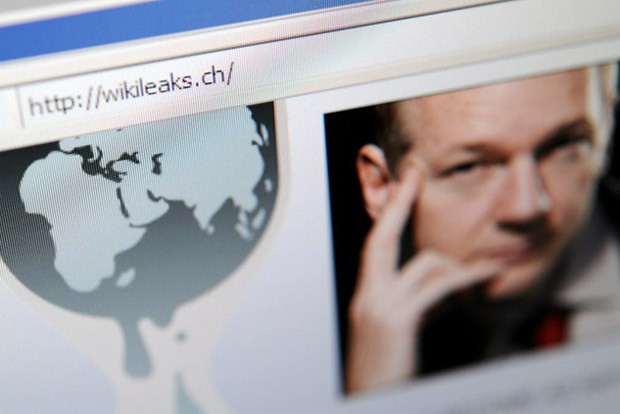TORONTO – Whether you think he’s a hero, a traitor, or somewhere in between, U.S. soldier Bradley Manning’s leak of hundreds of thousands of classified documents to WikiLeaks has exposed military and diplomatic information the public would not otherwise have seen.

In the wake of Wednesday’s 35-year sentence following his conviction of 20 offences related to espionage, theft and computer fraud, Global News looks at five things learned from Manning’s leaks.
For our ongoing coverage of Bradley Manning and Wikileaks, click here
1. Baghdad airstrike video “Collateral Murder”
During his trial, Manning admitted sending Wikileaks a 2007 combat video shot from a U.S. Apache helicopter attack in Baghdad, Iraq. The helicopter fired on civilians, killing 11 people, including two Reuters employees. One employee was a driver, and one was a photographer whose lens was mistaken for a weapon, according to the Pentagon.
“The most alarming aspect of the video to me was the seemingly delightful bloodlust the aerial weapons team happened to have,” Manning said in his first detailed description of his actions, adding that the soldiers’ actions “seemed similar to a child torturing ants with a magnifying glass.”
Wikileaks posted the video in 2010, and called it “Collateral Murder.”
2. Granai airstrike
- 2 teens charged with murder in case of 16-year-old killed outside Halifax mall
- Green Party deputy leader given jail sentence for Fairy Creek old growth protests
- Cars torched, explosions heard in suspected arson in Montreal neighbourhood
- Gas station clerk stabbed several times during violent attack at Ultramar in Montreal
Manning gave Wikileaks a classified video of a 2009 U.S. airstrike in Granai, Afghanistan, according to his memo to the court as well as confirmation from Wikileaks editor-in-chief Julian Assange. The video of the strike, which killed between 90 to 150 Afghan civilians—including many children, has never been published.
Assange categorized the air strike as “a massacre” and told Australia newspaper The Age that the video had been scheduled for release, but was taken by former Wikileaks spokesperson Daniel Domscheit-Berg when he left the organization.
“WikiLeaks no longer has a copy,” Assange told The Age National, adding Berg had said he later destroyed it. The news agency reported that a U.S. military inquiry into the Granai incident concluded American air and ground crews did not follow rules of engagement meant to prevent civilian casualties.
3. Iraq war logs
Manning leaked information regarding the treatment of detainees in Iraq, which came to be known as the “war logs” in publications by Wikileaks and three media partners: The New York Times, The Guardian, and Der Spiegel.
The Times wrote that the Wikileaks documents didn’t describe much of U.S. detention facilities, but they contained details of abuse by Iraq’s army and police. The reports referred to the deaths of at least six prisoners in Iraqi custody, with hundreds of instances of beatings and burnings.
4. Afghan war logs
These battlefield reports were also published in a series by the Times, who suggested in a 2010 article that despite a U.S. contribution of $300 billion on the war in Afghanistan, the Taliban was “stronger than at any time since 2001” and the war was more grim than its official portrayal.
“The documents sketch a war hamstrung by an Afghan government, police force and army of questionable loyalty and competence, and by a Pakistani military that appears at best uncooperative and at worst to work from the shadows as an unspoken ally of the very insurgent forces the American-led coalition is trying to defeat,” wrote the Times.
The news agency noted that the leaked documents don’t contradict official U.S. accounts of the war in Afghanistan, but point to some misleading public statements, such as “attributing the downing of a helicopter to conventional weapons instead of heat-seeking missiles or giving Afghans credit for missions carried out by Special Operations commandos.”
5. “Cablegate”
Manning was responsible for leaking more than 250,000 U.S. diplomatic cables, dubbed “Cablegate,” and considered by Wikileaks to be the largest set of confidential documents ever released to the public. (Diplomatic cables are confidential text messages between a diplomatic embassy or consulate and the foreign ministry of its parent country).
Manning said he leaked the information to expose wrongdoing by the military and U.S. diplomats, but U.S. officials testified that the leaks hurt the U.S. State Department’s ability to advance human rights because some foreign citizens were endangered, and some activists became reluctant to seek U.S. help.
The Times said the cables showed an “unprecedented look at bargaining by embassies, candid views of foreign leaders and assessments of threats.” Their series picked out topics such as: U.S. State Department employees were told to gather credit card and other personal data of foreign officials, the U.S. had little hope Russia would become more democratic, and messages that suggested U.S. diplomats think Canadians “carry a chip on their shoulder” and feel overshadowed by the U.S.
The cables also revealed America’s weak support for Tunisia’s government – a disclosure that Manning supporters said helped trigger the Middle Eastern pro-democracy uprisings known as the Arab Spring.
In May, prosecutors agreed to accept Manning’s guilty plea for a lesser version of one of 22 counts, involving a single diplomatic cable summarizing U.S. embassy discussions with Icelandic officials about the country’s financial troubles.
With files from The Associated Press



Comments